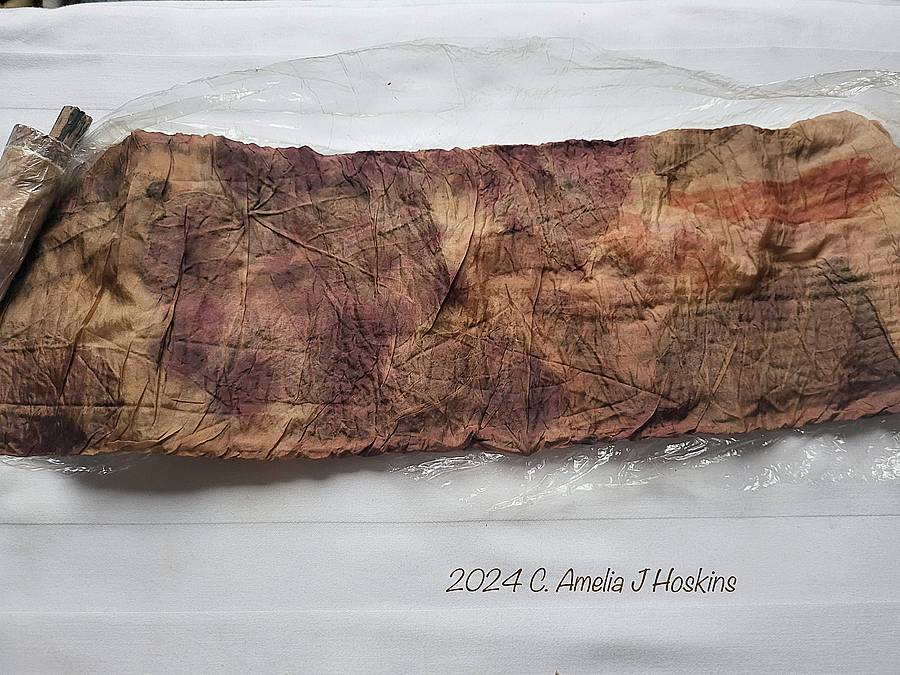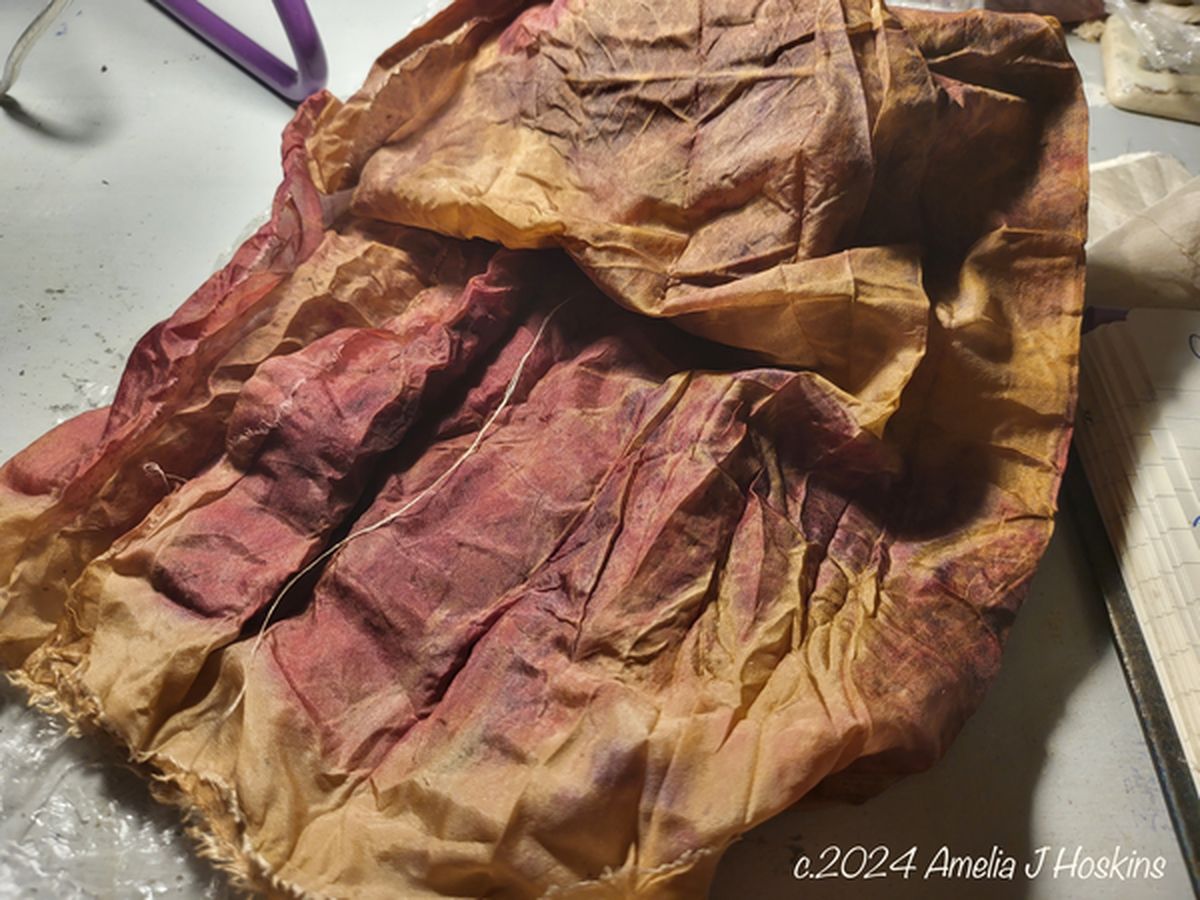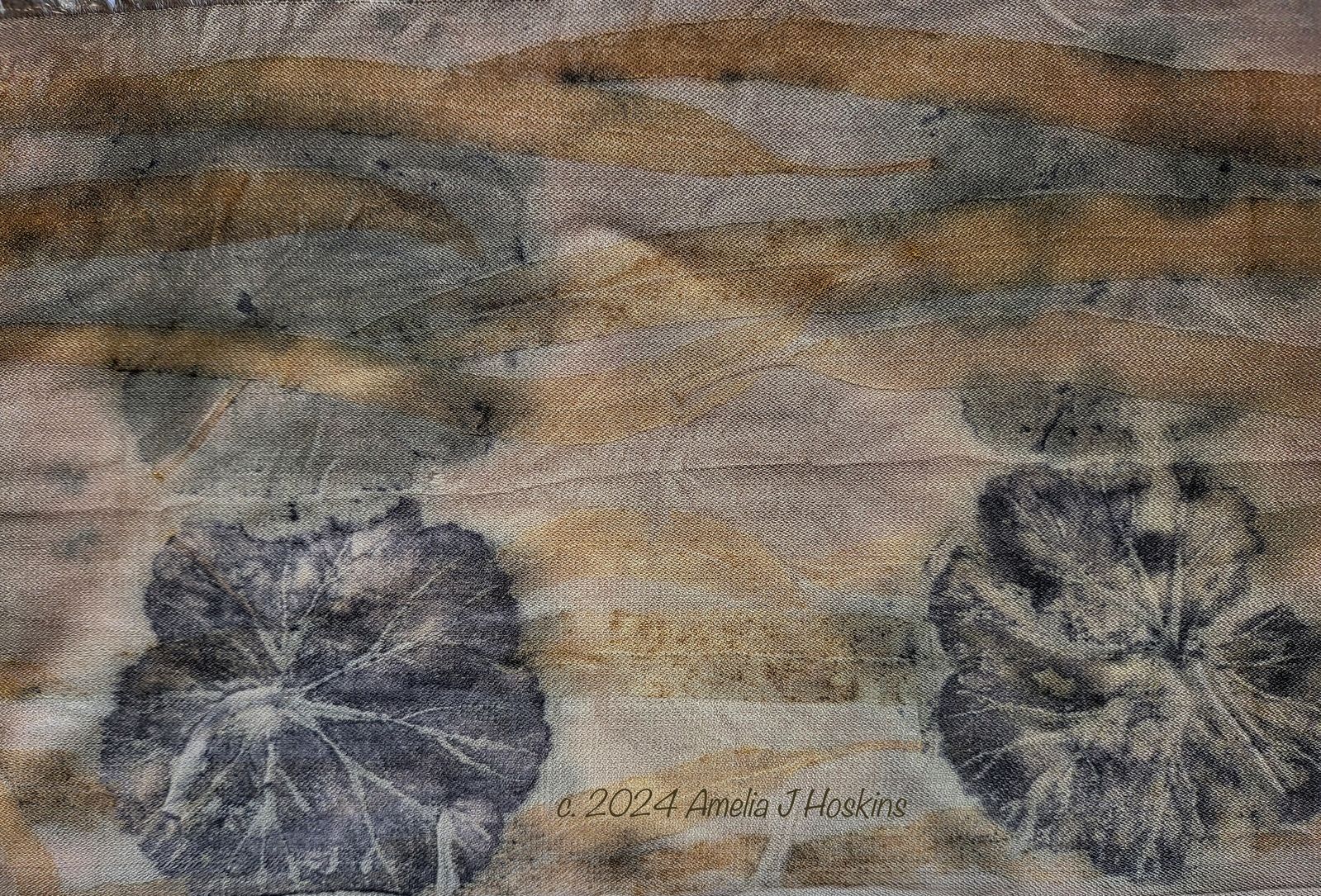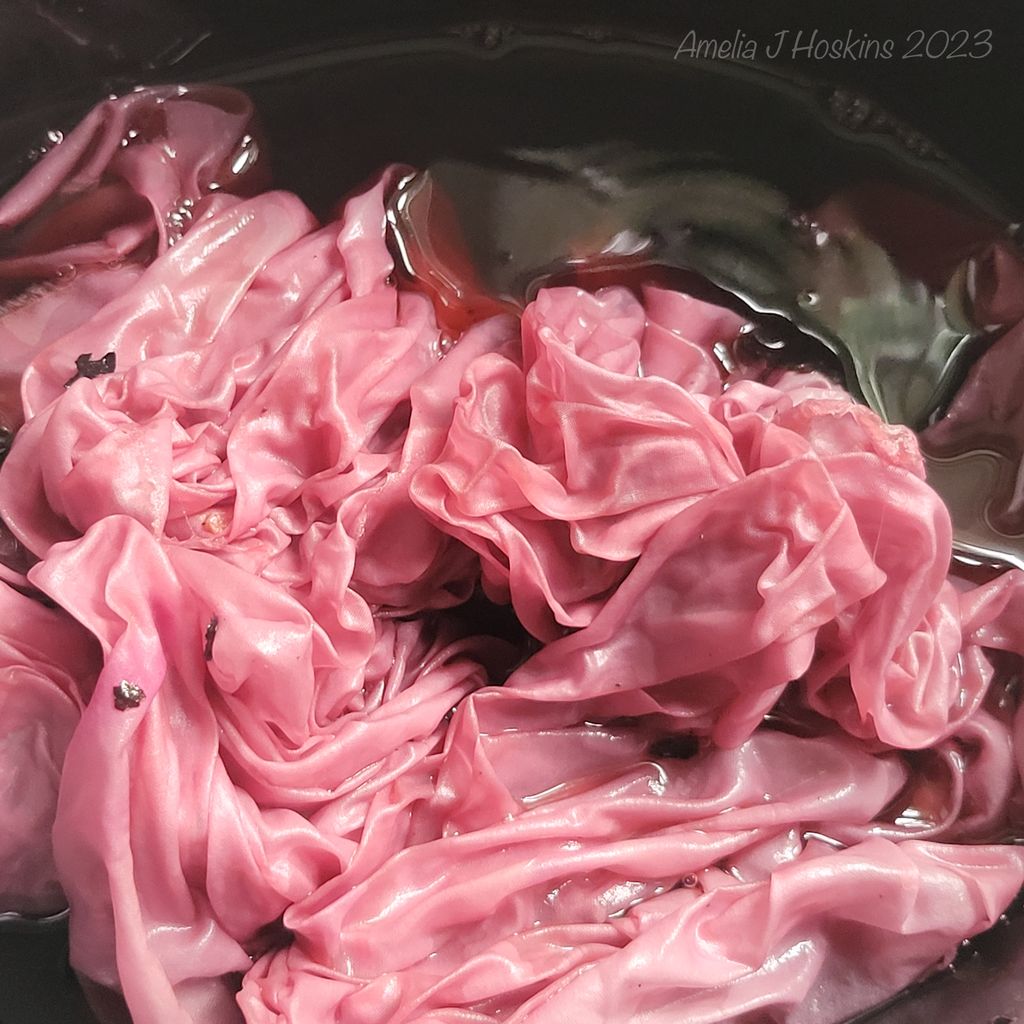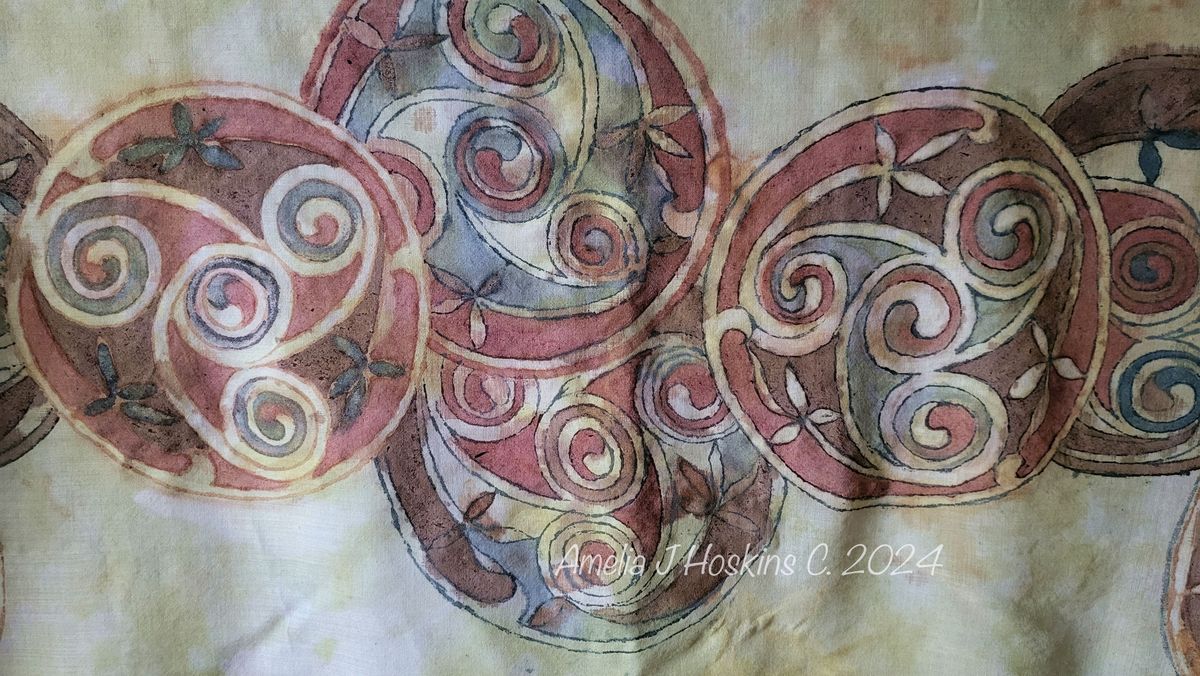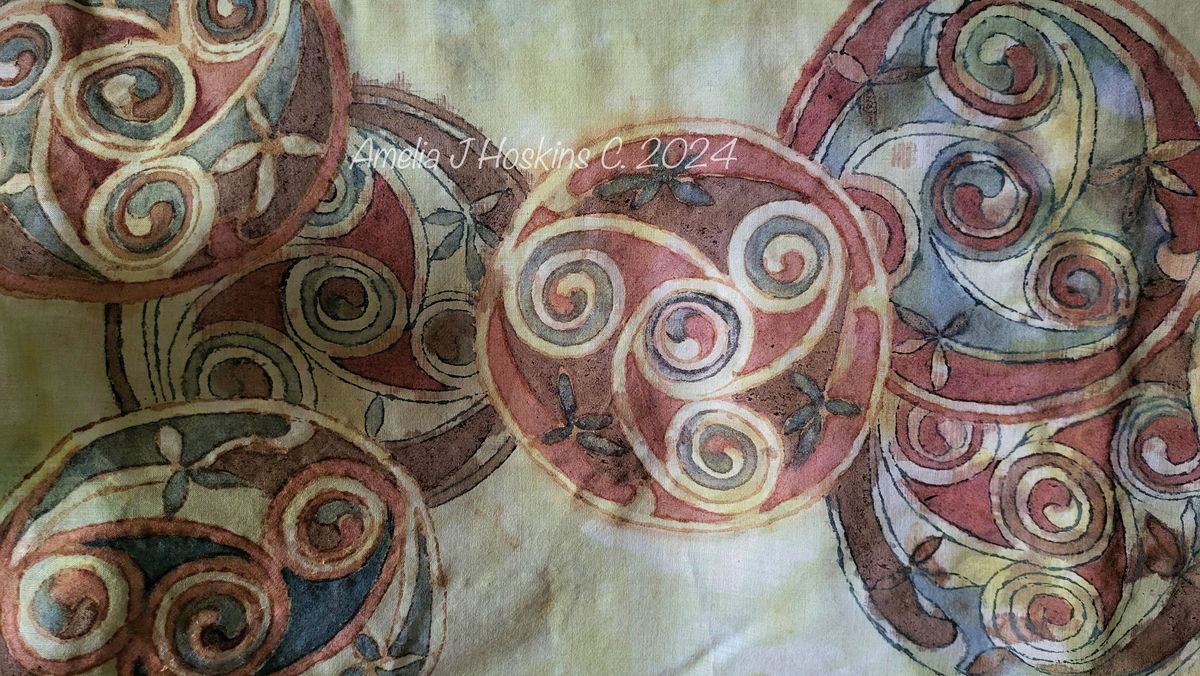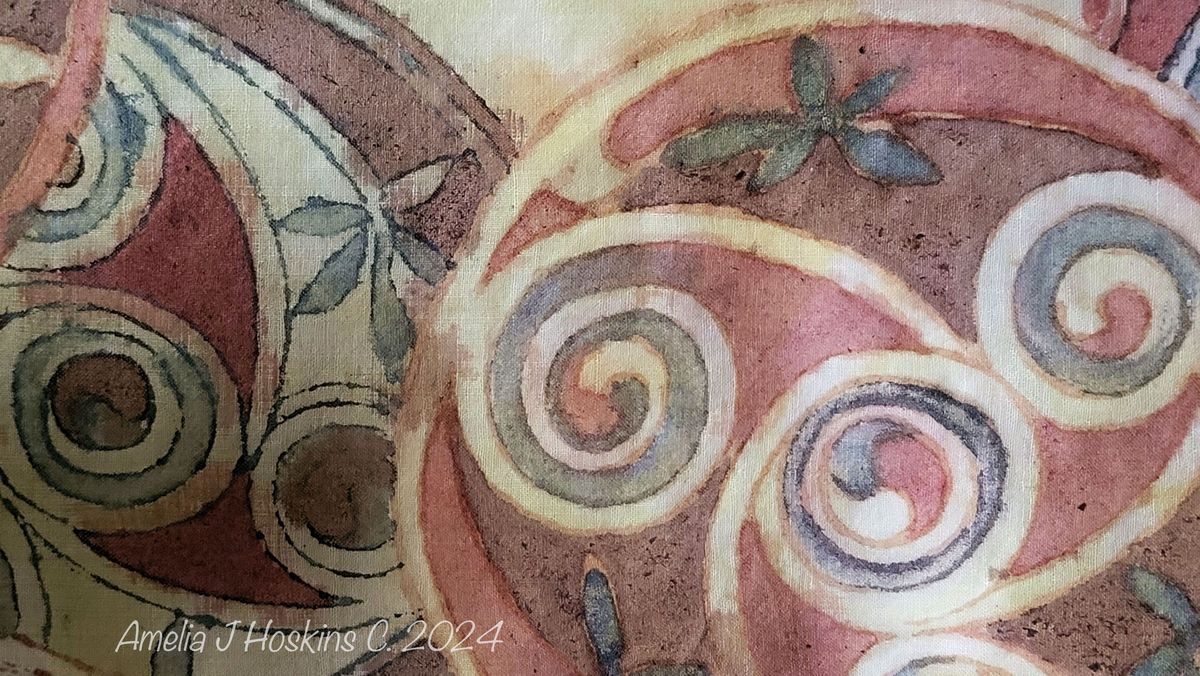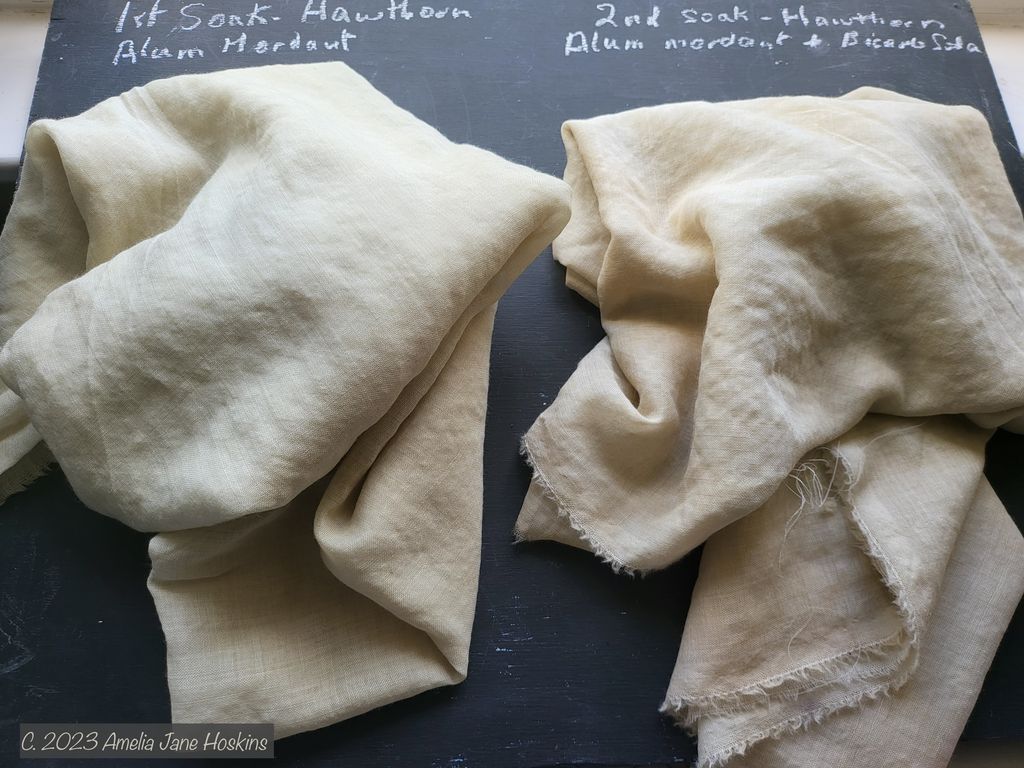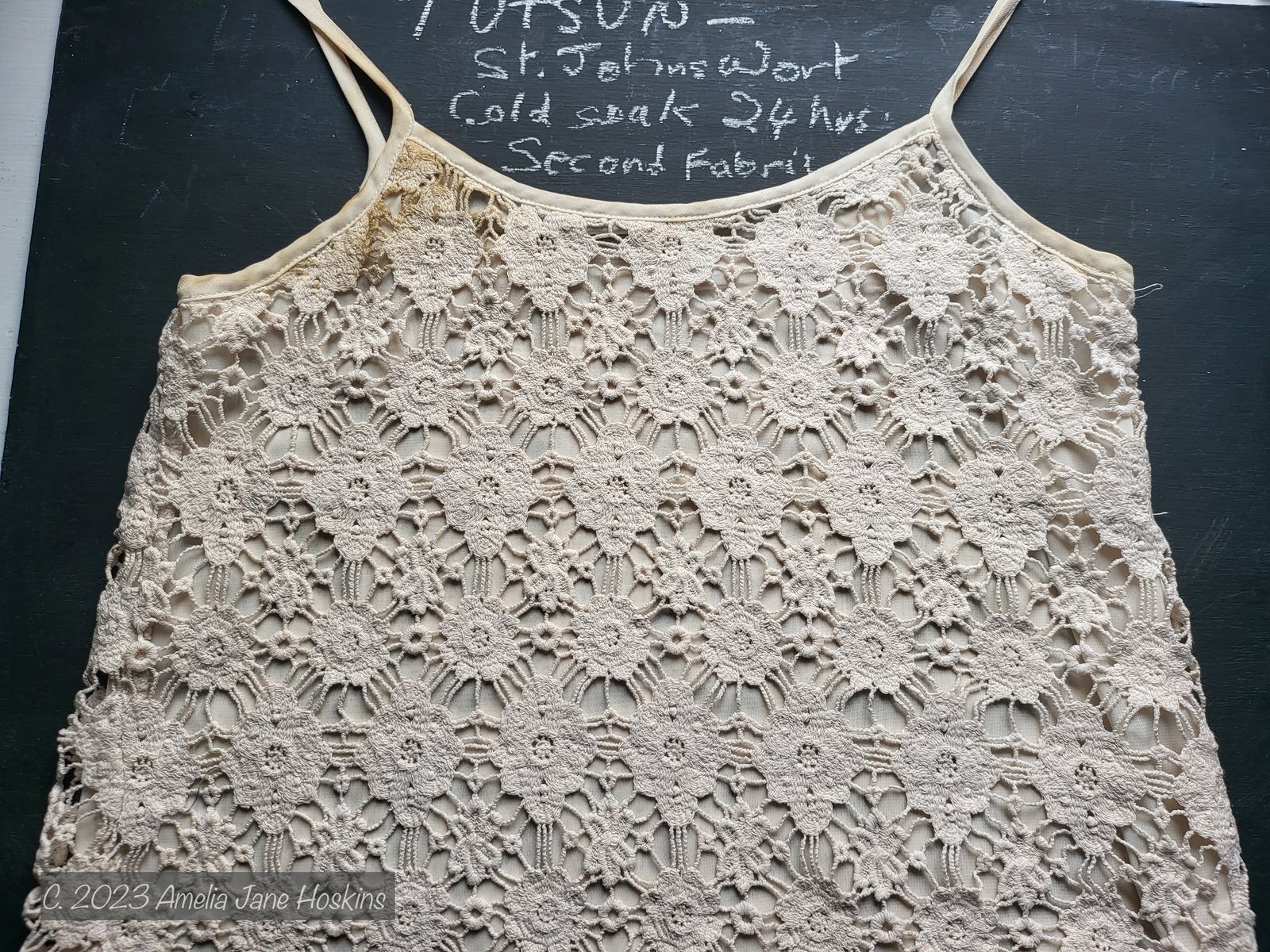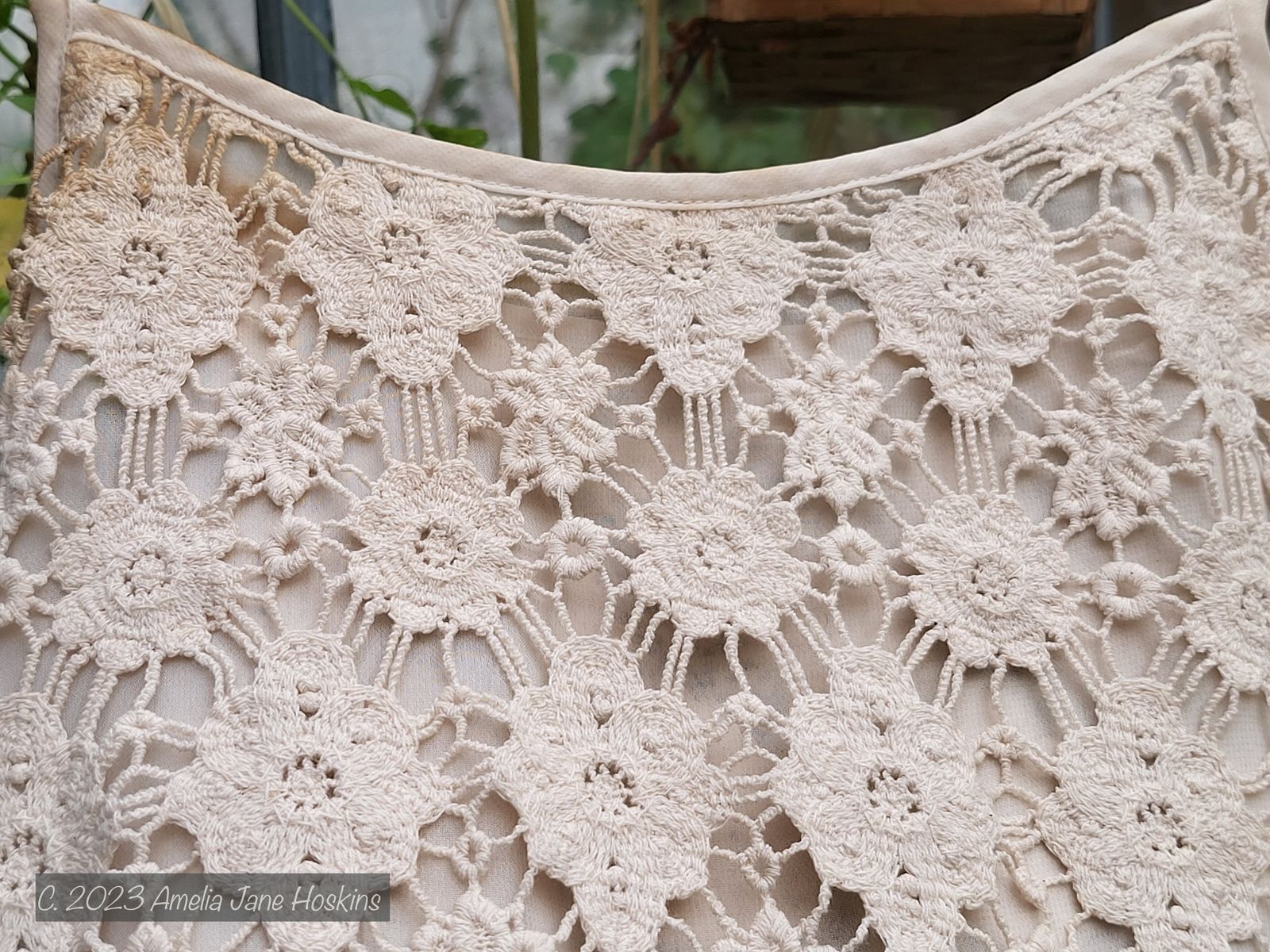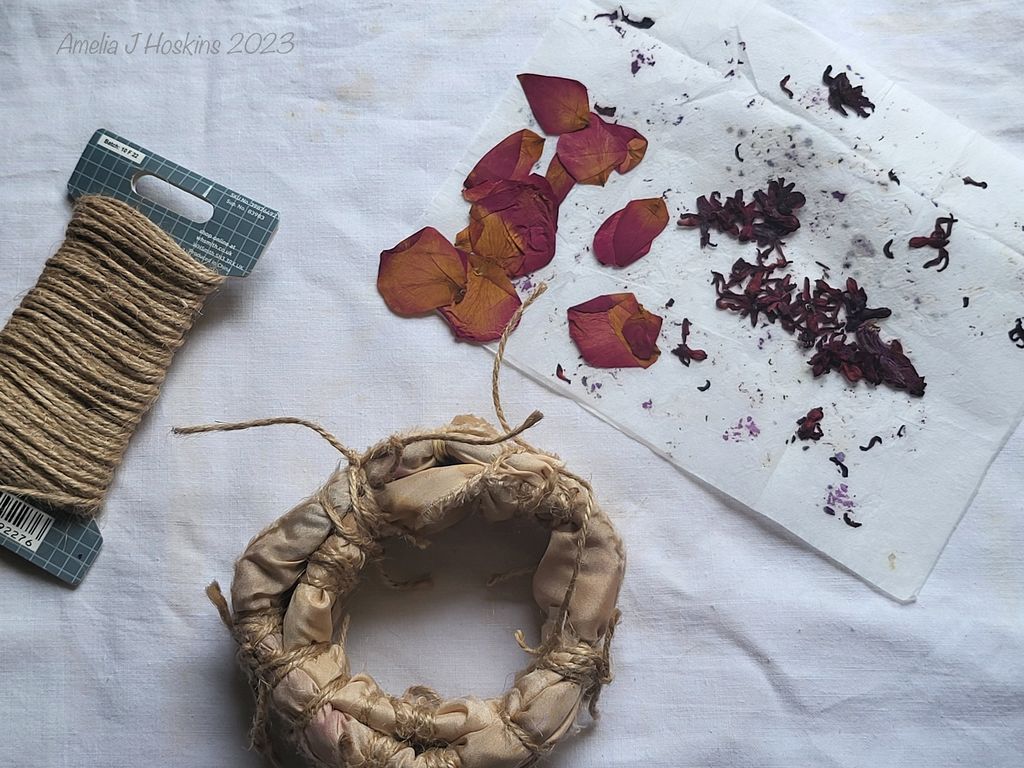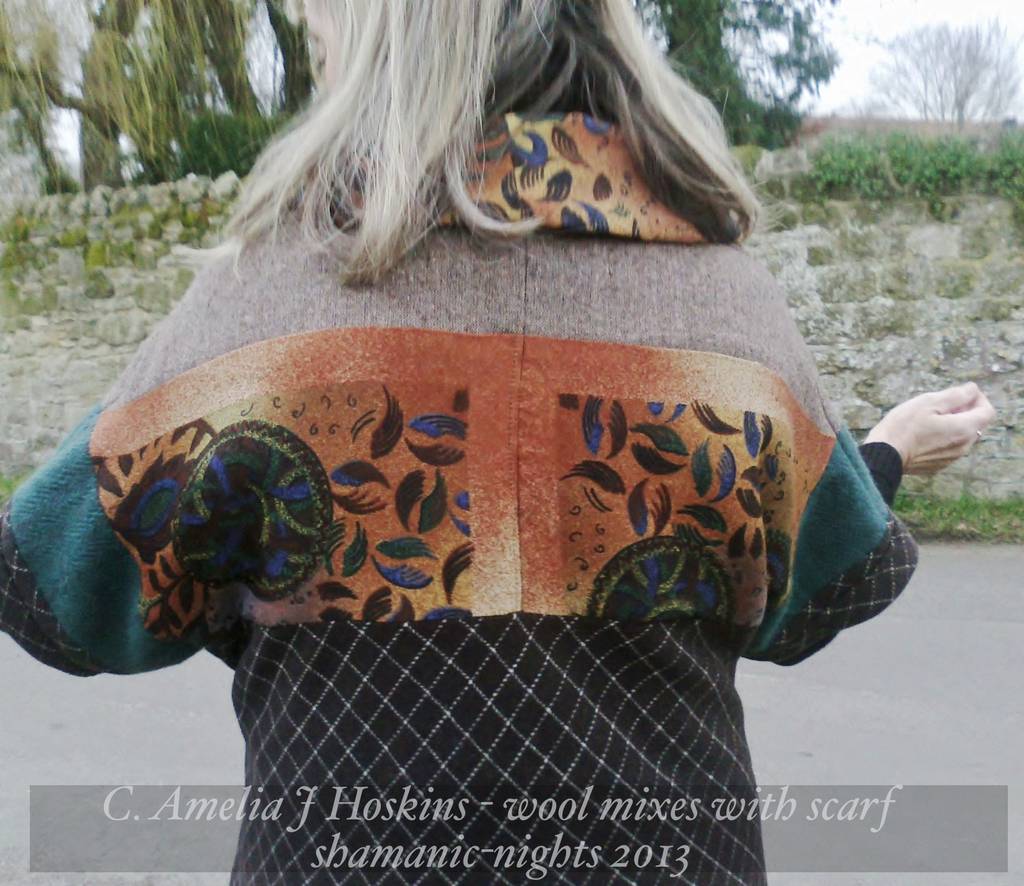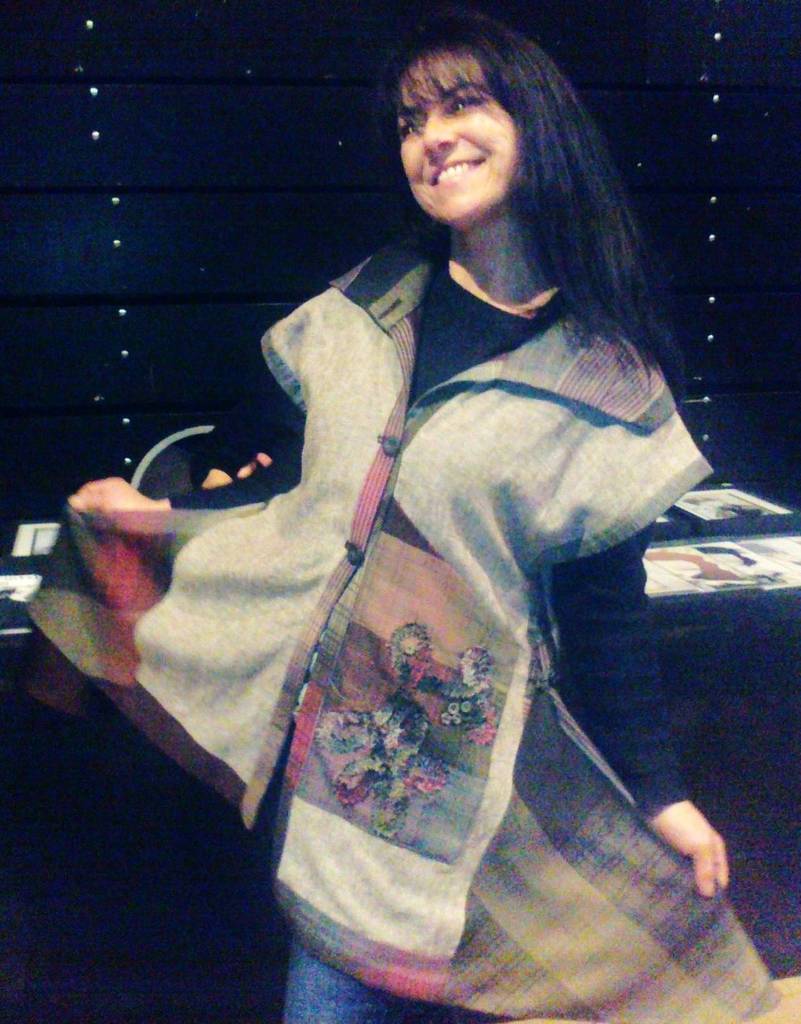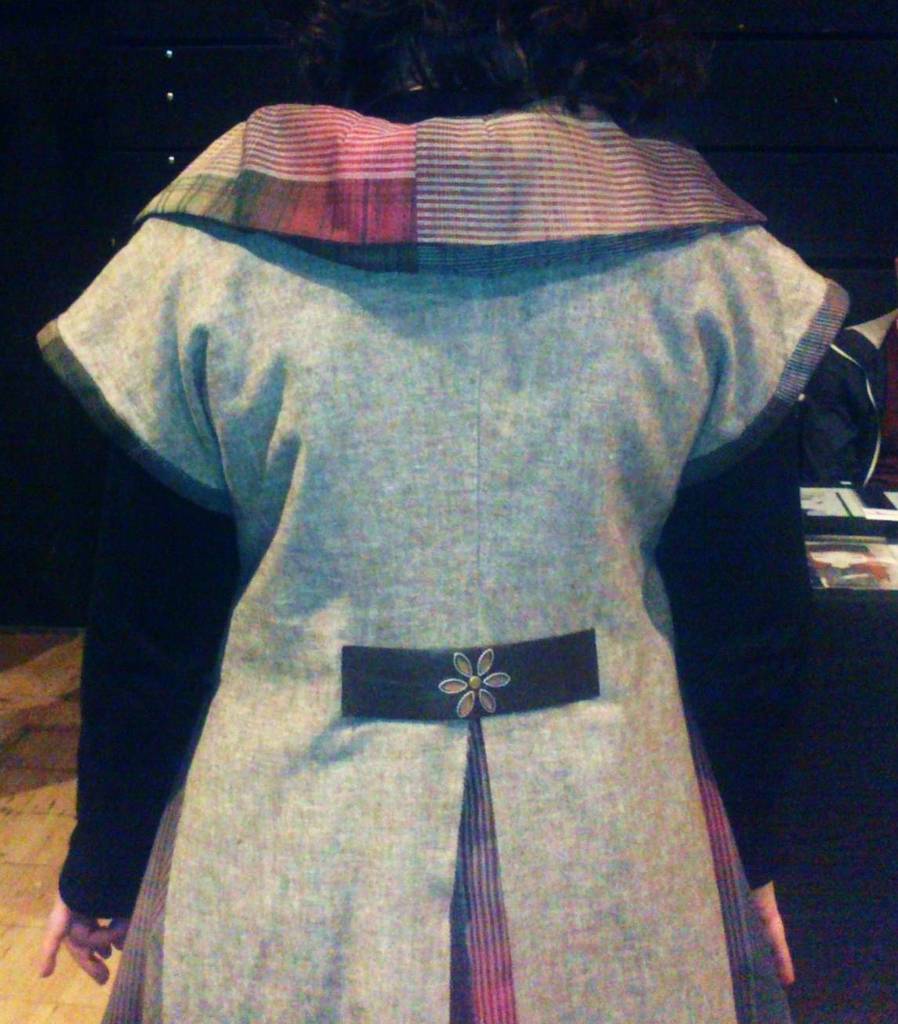Eco print fine wool scarf Catalpa leaves Purple Coreopsis and seeds
Fine wool scarf eco printed with large Catalpa leaves (deep red-brown)
Addition: Purple Coreopsis flowers (deep violet print), and red Hesperanth flowers which turn blue.
Fringe: Dartmoor Shetland wool - hand dyed with Scabious Black Knight (grey) and three tones of Amaranth (beige).

Colour in sunlight is yellower than actual, which is dull gold


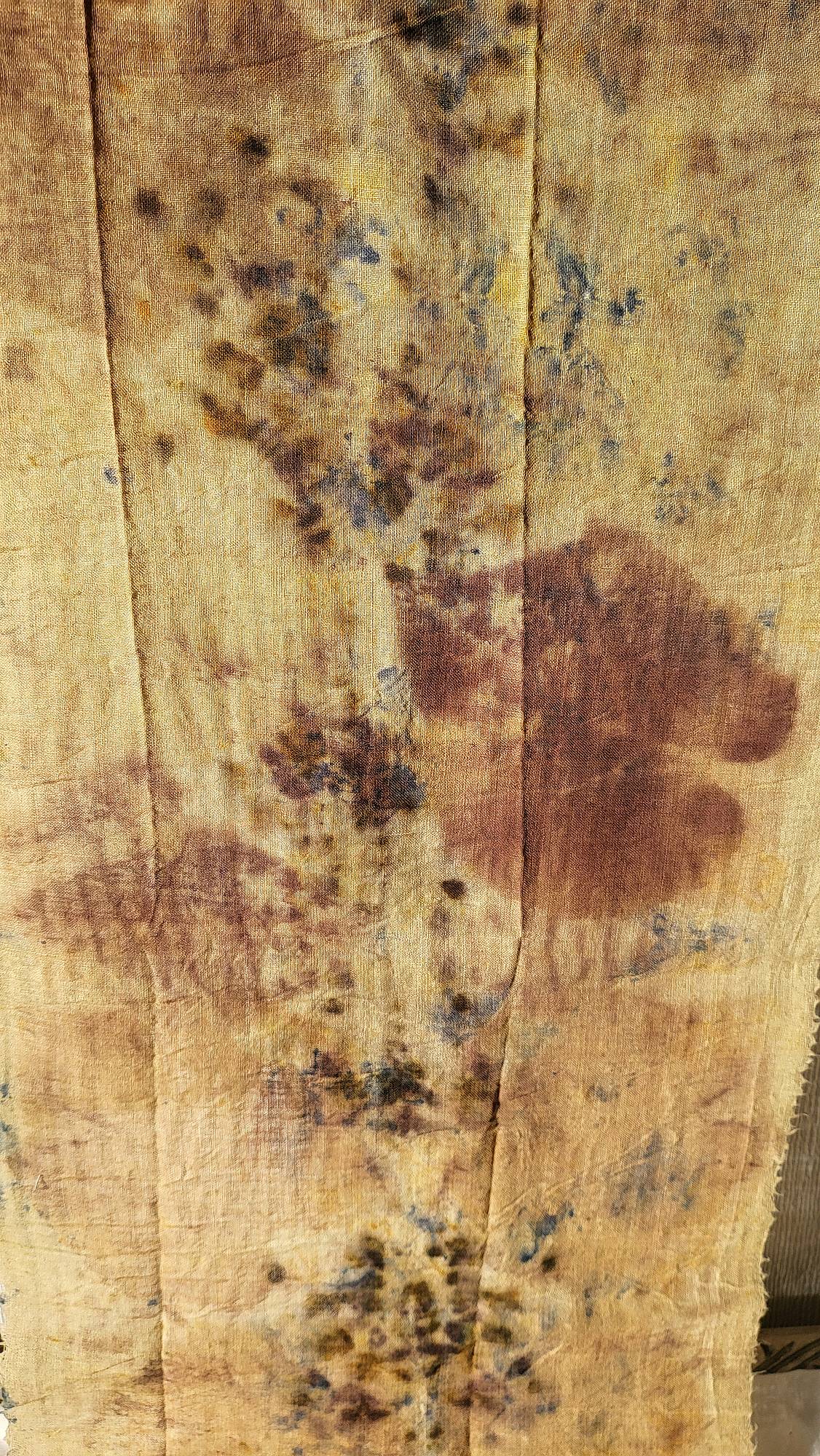
Crimson Catalpa leaves with Violet centre Coreopsis prints

Eco Print Process:
Fine wool was previously dyed with Comfrey or Rosemary giving dull gold background. Large red leaves of vine tree Catalpa Bignoniodes See post; Secondary bundle dye needed: Catalpa leaves, Purple Coreopsis flowers (making violet) and Hesperanth (red - turns blue) form the scattered prints. Blue not seen in all photos is now prussian blue.
Preparation of 2nd bundle dye Catalpa leaves and Purple Coreopsis over 1st eco print Catalpa leaves

Dowel of fine wool with leaf print wet

Unrolling the steamed bundle of leaves
















